
Macy’s, a venerable name synonymous with American retail for over 160 years, is currently navigating a monumental transformation. From its iconic flagship store in Herald Square to hundreds of department stores nationwide, Macy’s has long been a staple for families seeking fashion, home goods, and gifts. However, like many legacy retailers, it has faced mounting challenges from declining mall traffic, the relentless rise of online shopping, and ever-evolving consumer preferences.
In response to these significant market shifts, Macy’s has initiated a comprehensive restructuring plan, boldly named the ‘Bold New Chapter.’ This ambitious, three-year turnaround strategy is designed to modernize operations, divest underperforming locations, and strategically invest in more agile, profitable formats that align with contemporary shopping habits. It’s a calculated move to ensure the company’s long-term sustainability and profitability in a fiercely competitive retail landscape.
This article delves into the specifics of this transformation, examining the scope of Macy’s store closures, the rationale behind these decisive actions, and the profound implications for communities, employees, and loyal shoppers across the United States. We will explore the initial list of affected locations, shedding light on which stores are closing and what this ‘Bold New Chapter’ truly signifies for the future of Macy’s.
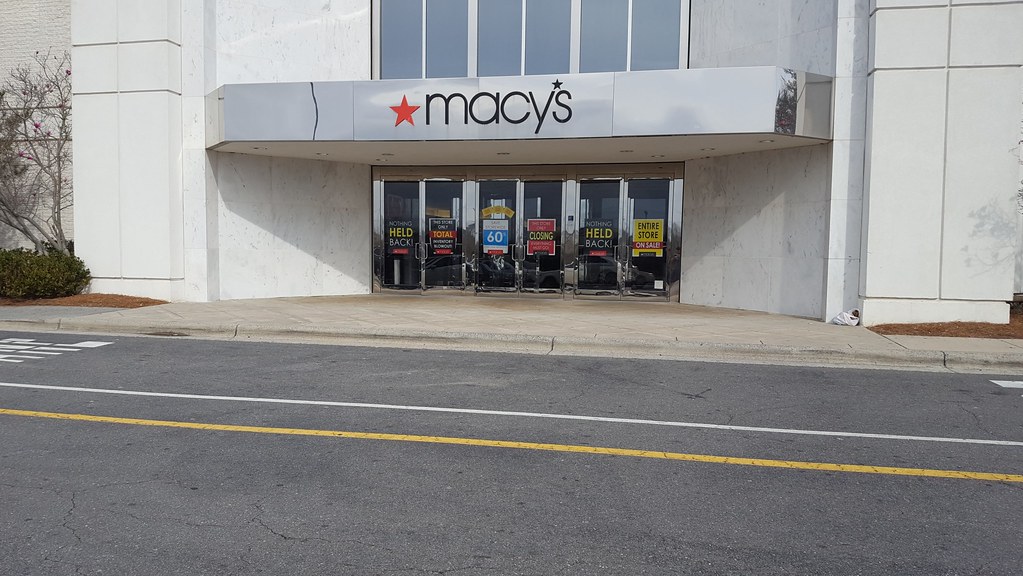
1. **Macy’s ‘Bold New Chapter’ Vision**Macy’s ‘Bold New Chapter’ is more than just a plan for store closures; it’s a strategic declaration aimed at rejuvenating the company and returning it to what Macy’s described in a January 2025 press release as “sustainable, profitable sales growth.” This multi-faceted strategy involves a critical evaluation of its entire physical footprint, optimizing its store portfolio by divesting from “underproductive” locations while simultaneously pouring resources into its strongest assets.
The retailer’s CEO and chairman, Tony Spring, articulated the core philosophy behind this initiative in a January statement: “Closing any store is never easy, but as part of our Bold New Chapter strategy, we are closing underproductive Macy’s stores to allow us to focus our resources and prioritize investments in our go–forward stores, where customers are already responding positively to better product offerings and elevated service.” This statement underscores a commitment to efficiency and an enhanced customer experience in its thriving locations.
This strategic reset aims to reshape Macy’s for the next generation of shoppers, moving away from an outdated, sprawling department store model. It recognizes that maintaining hundreds of large physical stores has become increasingly costly compared to the return they generate, particularly with the seismic shift towards digital-first shopping experiences. The ‘Bold New Chapter’ is, in essence, about smart consolidation and forward-thinking investment in a rapidly changing retail environment.
Read more about: Unraveling the Shadows: The Unresolved Questions Surrounding the Death of Diddy’s Key Associate

2. **The 150-Store Closure Target by 2026**Central to Macy’s ‘Bold New Chapter’ is the aggressive target of closing approximately 150 “underproductive” Macy’s store locations by 2026. This comprehensive downsizing initiative is designed to be phased over several years, ensuring a managed transition for the company, its employees, and the affected communities. By the end of its 2026 fiscal year, which concludes on January 30, 2027, Macy’s plans to have completed these significant reductions.
Once these closures are finalized, Macy’s expects to operate a consolidated “go-forward fleet” of about 350 stronger-performing Macy’s stores across the U.S. These are the locations that will receive the bulk of the company’s strategic investments, reflecting areas of high sales volume, robust community demand, or significant strategic importance within the Macy’s portfolio. The focus is squarely on quality over sheer quantity of locations.
Interestingly, the company has shown considerable momentum in executing this plan. Before officially rolling out the ‘Bold New Chapter’ plan, Macy’s had already closed 64 stores by the end of 2024, demonstrating an aggressive proactive approach to shrinking its footprint. This pace suggests the company is keen to accelerate its transformation and adapt quickly to the evolving retail landscape, aiming to be slightly ahead of its internal expectations for recapturing sales.
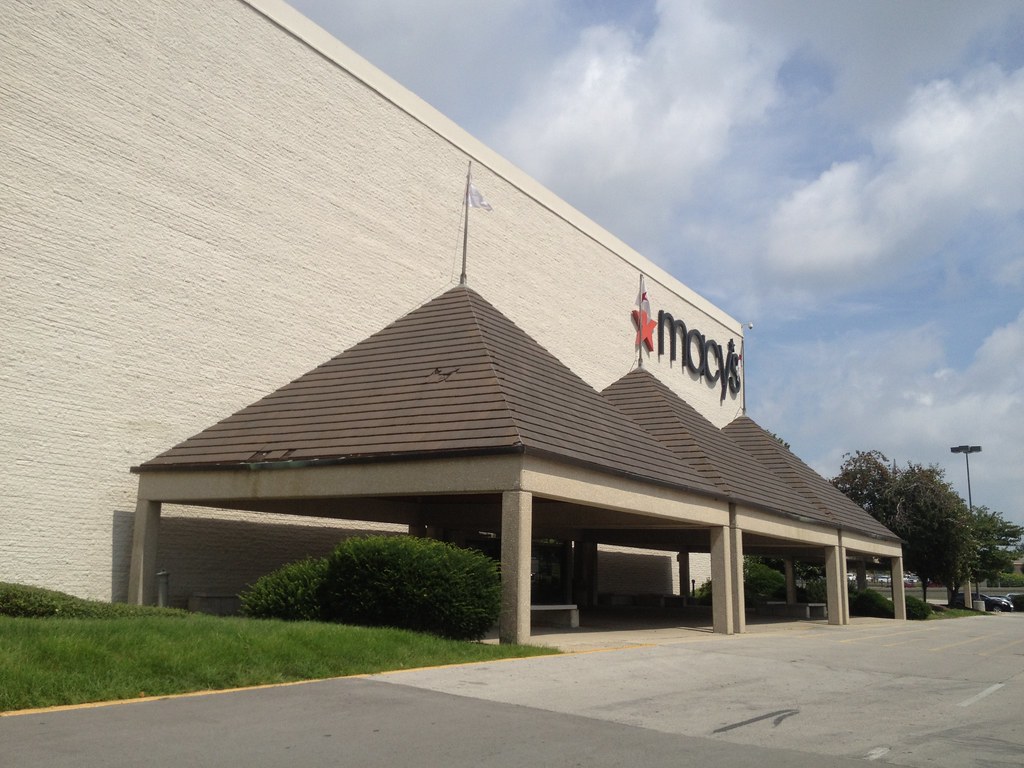
3. **The Initial Wave: 66 Stores Closed in Early 2025**The implementation of Macy’s restructuring plan began in earnest with a significant announcement in January 2025, where the company named 66 of the 150 stores slated for closure. This initial wave of shutdowns marked a concrete step in the ‘Bold New Chapter’ strategy, signaling to both investors and consumers the seriousness of Macy’s commitment to optimizing its store portfolio. These closures, described as “underproductive locations,” were carefully selected to streamline operations.
The 66 locations identified in January spanned a broad geographic area, affecting 22 states across the nation. This wave included a mix of suburban mall anchors and some well-known urban department stores, impacting a diverse range of communities. For many shoppers, the visibility of these closures brought the reality of Macy’s transformation plan into sharp focus, prompting a re-evaluation of their local shopping options.
Following the announcement, clearance sales commenced almost immediately at these 66 affected stores. These liquidation sales were scheduled to run for approximately 8 to 12 weeks, according to Macy’s website, allowing shoppers to benefit from significant discounts while inventory was cleared. By late spring 2025, many of these locations were expected to have permanently closed their doors, marking the completion of the first major phase of the company’s strategic overhaul.
Read more about: They Had 12 Planes, Japan Sent Dozens: The Unyielding Wildcat Defense of Wake Island
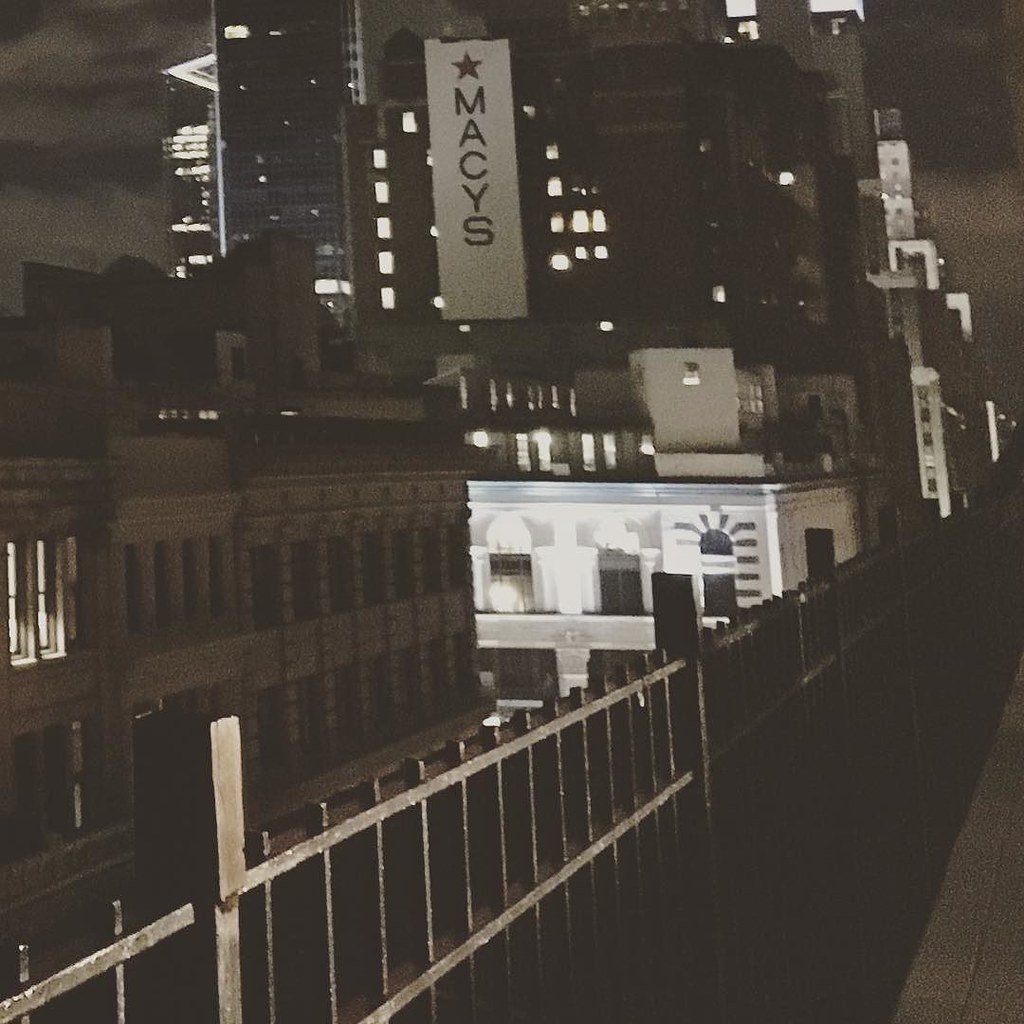
4. **Iconic New York City Closures (Brooklyn, Long Island)**Among the initial list of closures, several iconic New York locations stood out, underscoring the profound impact of Macy’s restructuring on historically significant retail landmarks. One particularly notable closure occurred in downtown Brooklyn, where the Macy’s store on Fulton Street ceased operations last weekend after an almost three-decade presence. This location held deep historical roots, having originally housed the first Abraham & Straus department store before Macy’s assumed occupancy in 1995.
The departure of the downtown Brooklyn Macy’s represents more than just a store closing; it signifies the end of an era for a building that has been a cornerstone of local commerce and a familiar fixture for generations of shoppers. Its closure, as reported by local outlets WPIX and News12 Brooklyn, highlights the challenging retail environment even for seemingly established urban locations that once thrived on heavy foot traffic and a strong community presence.
Adding to the list of impactful New York closures, another iconic Macy’s store on Long Island, situated at Sunrise Mall in Massapequa, is also slated to shut its doors next month. This closure, confirmed by Daily Mail, The Mirror US, and other local reports, further illustrates Macy’s strategy of shedding “underproductive” stores, even those with considerable local recognition. These significant New York closures collectively emphasize the widespread nature of the ‘Bold New Chapter’ strategy, affecting not only struggling malls but also traditionally robust retail areas.
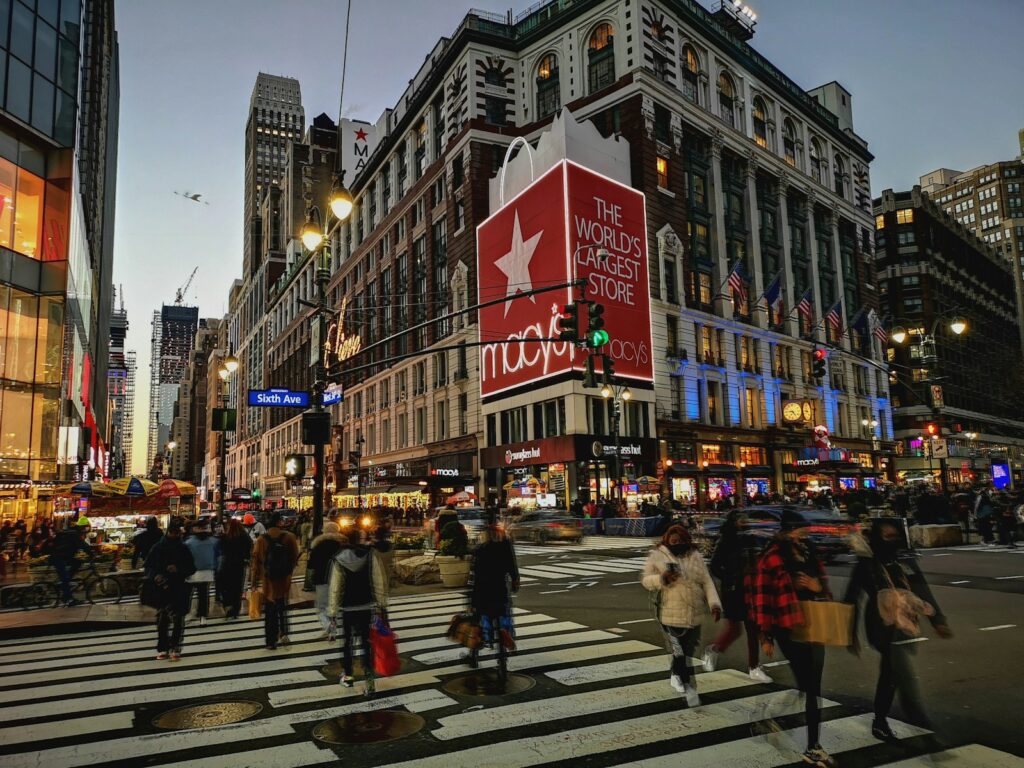
5. **California’s Affected Locations**California, a state known for its diverse retail landscape and a high concentration of shopping centers, has been significantly impacted by Macy’s initial wave of store closures. The list of named locations across the state reflects a strategic pruning of the company’s footprint, targeting stores in various settings from large regional malls to smaller shopping centers. These closures include key locations that have long served their communities.
Among the California stores facing closure are those in Los Angeles, Chula Vista, San Diego, Westminster, Citrus Heights, and Newark. Specific examples from the list include Village at Corte Madera in Corte Madera, Sunrise Mall in Citrus Heights, Westminster Mall in Westminster, Broadway Plaza in Los Angeles, Otay Ranch Town Center in Chula Vista, Downtown Plaza in Sacramento, Mission Valley Home in San Diego, and Hillsdale Furniture in San Mateo. This broad geographical spread within the state indicates a comprehensive approach to portfolio optimization.
The repurposing of these large retail spaces is already becoming a topic of local discussion, demonstrating the broader impact of such closures. For instance, in Corte Madera, the site of a long-standing Macy’s store is actively being considered for housing redevelopment. This trend reflects a growing inclination to convert former large-format retail sites into alternative uses, addressing local needs for housing or mixed-use developments and showcasing a fundamental shift in land utilization once retail anchors depart.
Read more about: From Peach State to Production Powerhouse: The Economic and Strategic Drivers Luring Blockbusters to Georgia Over California
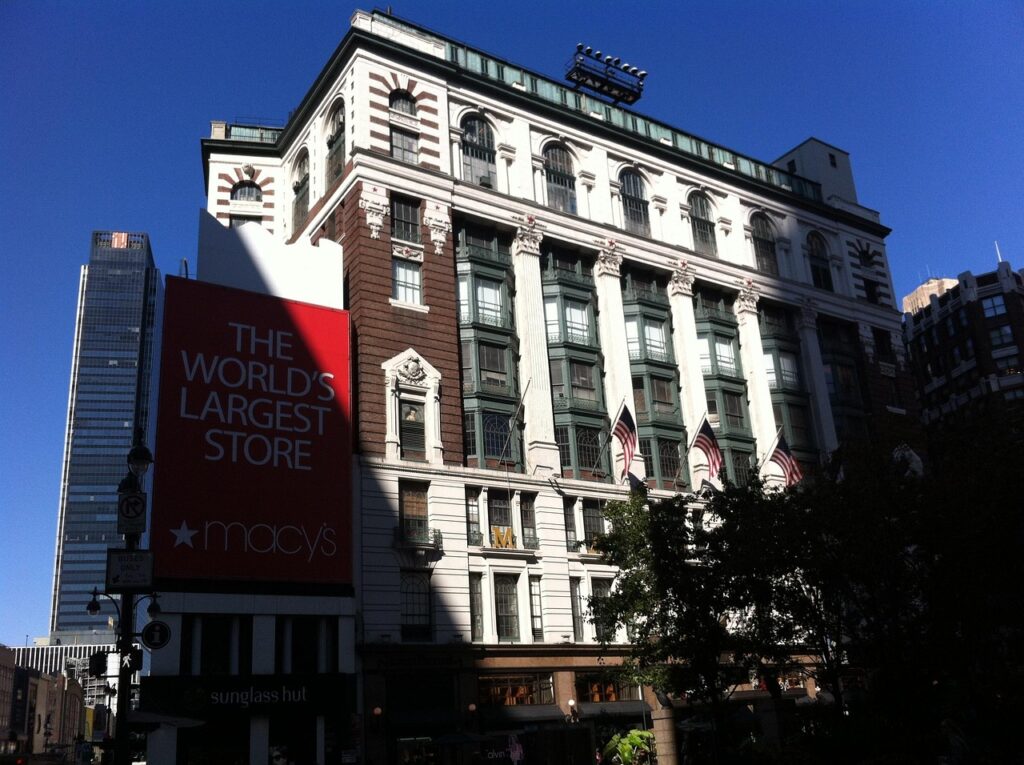
6. **Florida’s Store Shut-downs**Florida, a state with numerous vibrant shopping destinations and a significant population base, is also experiencing a notable reduction in its Macy’s store count as part of the ‘Bold New Chapter’ initiative. The closures span various types of locations, including traditional mall anchors and specialized furniture galleries, reflecting Macy’s detailed assessment of each store’s profitability and strategic value. This affects both metropolitan and suburban areas across the state.
Confirmed Florida locations on the closure list include stores in Sarasota, Fort Lauderdale, Pembroke Pines, Tampa, and Boynton Beach. More specifically, these encompass Fort Lauderdale Furniture in Fort Lauderdale, Pembroke Pines Furniture in Pembroke Pines, Boynton Beach Mall in Boynton Beach, South Dade Furniture in Miami, West Shore Plaza in Tampa, Altamonte Furniture in Altamonte Springs, and the Southgate location in Sarasota. The inclusion of multiple furniture gallery locations highlights a particular area of adjustment for Macy’s.
Clearance sales for Macy’s Backstage stores and Macy’s Furniture Galleries, such as those in Florida, commenced in February and were scheduled to run for approximately six weeks. This timeline for liquidation sales is slightly different from the broader department store closures, indicating a tailored approach to managing inventory and closing operations across diverse store formats. These closures underscore Macy’s commitment to shedding underproductive assets, even within its specialized retail divisions.

7. **Texas Retail Footprint Reduction**Texas, a geographically vast state with major urban centers and sprawling retail developments, is also witnessing a significant consolidation of Macy’s physical presence. The closures across Texas are part of the nationwide effort to streamline operations and focus resources on higher-performing stores. These strategic decisions impact a range of communities, from major metropolitan hubs to surrounding suburban areas.
Several key Texas locations have been identified for closure. These include stores in Dallas, Houston, Plano, Fort Worth, and Flower Mound. More precisely, the list encompasses Almeda Mall in Houston, Macy’s Village in Fairview, Shops at Willow Bend in Plano, Southlake Town Square in Southlake, West Bend in Fort Worth, and Highlands of Flower Mound in Flower Mound. This concentration of closures within a state like Texas demonstrates the pervasive nature of Macy’s restructuring plan, touching diverse retail environments.
These closures in Texas, much like those in California and Florida, are a direct response to changing consumer behaviors and rising retail costs, as noted by CEO Tony Spring. Larger, legacy locations in these areas were simply not generating the necessary returns to justify their operational expenses in the current market. Macy’s is making difficult decisions to ensure that its remaining 350 locations, including those still operating in Texas, are well-positioned for future profitability and growth, aligning with the core tenets of its ‘Bold New Chapter’ strategy.
Navigating the complexities of modern retail, Macy’s ‘Bold New Chapter’ is not merely a reaction to falling sales but a calculated pivot. The subsequent sections of this article will dissect the fundamental drivers behind these closures, explore Macy’s strategic reallocations, and examine the profound implications for its loyal customer base and dedicated employees. Understanding these deeper layers is crucial to grasping the future trajectory of this American retail icon.
Read more about: Your Ultimate Lifehacker Guide: 12 Simple Steps to Recycle Old Car Batteries Safely and Maximize Your Refund
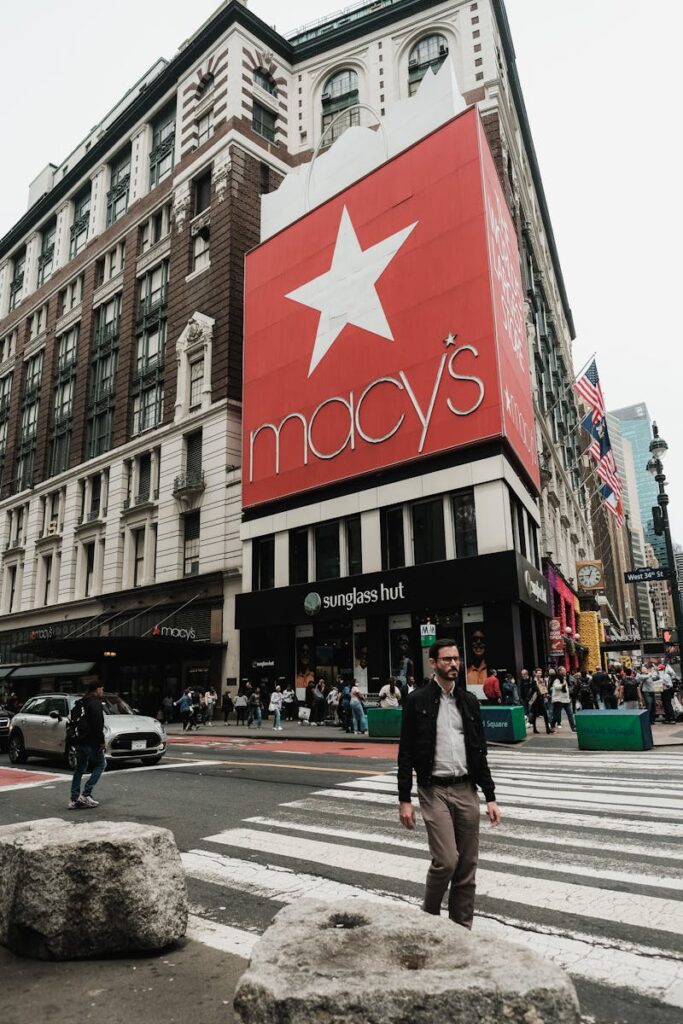
8. **Why the Closures Are Happening: Decline of Mall Traffic**Macy’s, for decades, stood as the quintessential anchor tenant within American malls, drawing significant foot traffic that benefited surrounding smaller retailers. This symbiotic relationship was a cornerstone of the traditional retail landscape. However, the ecosystem has dramatically shifted, with mall traffic experiencing a steady and undeniable decline, a trend that has significantly impacted the profitability of many Macy’s locations.
This decline is largely attributable to evolving consumer behaviors, including a preference for online shopping and the rise of outdoor lifestyle centers that offer a different kind of shopping experience. Many of the stores Macy’s is slated to close are situated within struggling malls, where decreased footfall has made it increasingly challenging to sustain operations and remain profitable.
As CEO Tony Spring noted, these larger, legacy locations were simply not generating the necessary returns to justify their operational expenses in the current market. The departure of an anchor store like Macy’s often exacerbates the struggles of already ailing malls, creating a vacuum that can be difficult to fill and further reducing the appeal of these once-bustling shopping destinations.

9. **Why the Closures Are Happening: The Rise of Online Shopping and ‘Retail Apocalypse’**Beyond declining mall traffic, the relentless surge of e-commerce has fundamentally reshaped consumer habits, pushing millions of shoppers away from physical stores and toward the convenience of digital platforms. Customers now increasingly prefer the ease of browsing and purchasing items from home, 24/7, a stark contrast to the time and effort required for a trip to a large department store. This shift has placed immense pressure on brick-and-mortar retailers like Macy’s.
While Macy’s has made substantial investments in enhancing its website and mobile application, maintaining hundreds of expansive physical stores has become disproportionately costly relative to the revenue they generate. The digital realm offers a broader selection, competitive pricing, and personalized experiences that are difficult for large-format stores to replicate efficiently, making the physical footprint less impactful.
Industry analysts often label this widespread trend the “retail apocalypse,” though many argue it’s more accurately a “retail transformation.” This isn’t the death of retail itself, but rather a dramatic evolution where traditional models must adapt or face downsizing and closure. Macy’s is not an isolated case; countless other legacy retailers, including Sears, JCPenney, and Bed Bath & Beyond, have undergone similar fates, underscoring the imperative for rapid adaptation to new consumer expectations.
This transformation highlights that stores that fail to adapt quickly enough to changing consumer habits are vulnerable. Macy’s strategic reset, therefore, is not just about cutting losses but about actively reshaping the company to align with how and where people are actually shopping today, ensuring its relevance in a digital-first era.
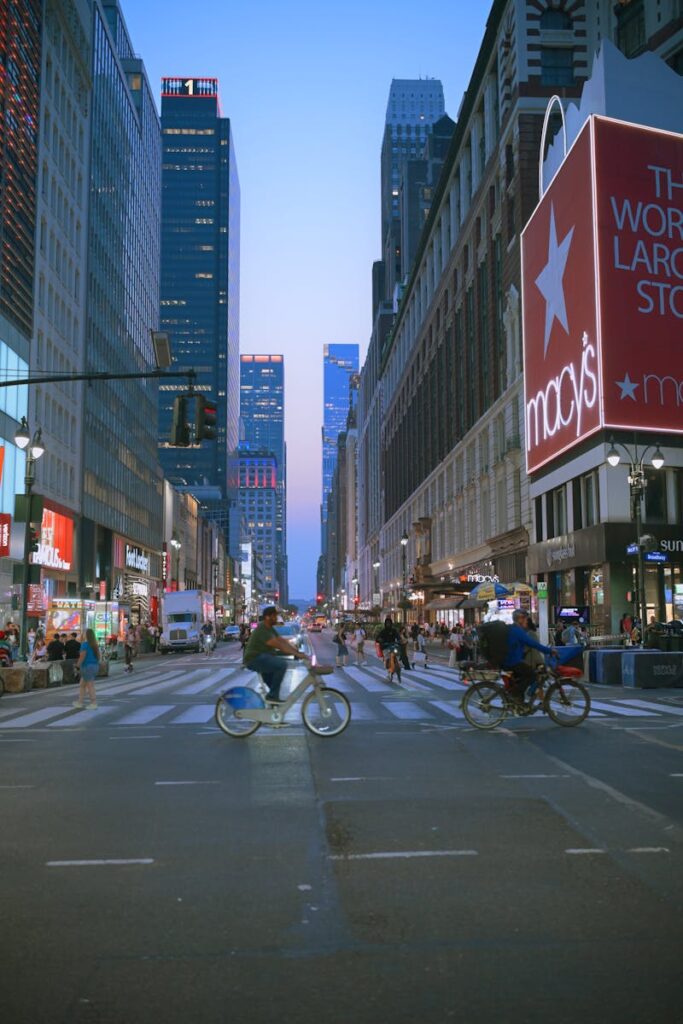
10. **Strategic Investments in Remaining ‘Go-Forward’ Stores**While the headlines often spotlight store closures, it is crucial to recognize that Macy’s ‘Bold New Chapter’ also entails significant strategic investments in its remaining “go-forward fleet” of approximately 350 stronger-performing stores. This dual strategy ensures that resources are concentrated on locations with high sales volume, robust community demand, and significant strategic importance within the Macy’s portfolio, transforming them into more engaging and profitable shopping destinations.
The company has been actively remodeling these key locations, with upgrades extending to layout, lighting, and overall in-store experiences. So far, 125 stores have already undergone these modernizations. These revitalized stores are demonstrating impressive results, with CEO Tony Spring reporting that they are “outperforming the rest of the fleet.” This indicates that customers are responding positively to enhanced product offerings and elevated service in these improved environments.
By focusing resources on these high-potential stores, Macy’s aims to create a more compelling and contemporary shopping experience, encouraging customer loyalty and increasing profitability. This investment is not just about aesthetics; it’s about optimizing operational efficiency and customer engagement in its most valuable physical assets, ensuring they can compete effectively in today’s demanding retail landscape.
This commitment to a smaller but stronger footprint is central to Macy’s long-term sustainability. The modernized stores serve as proof points that a targeted approach, combining physical improvements with refined product selections and service, can indeed drive positive financial outcomes and customer satisfaction even in a challenging market.
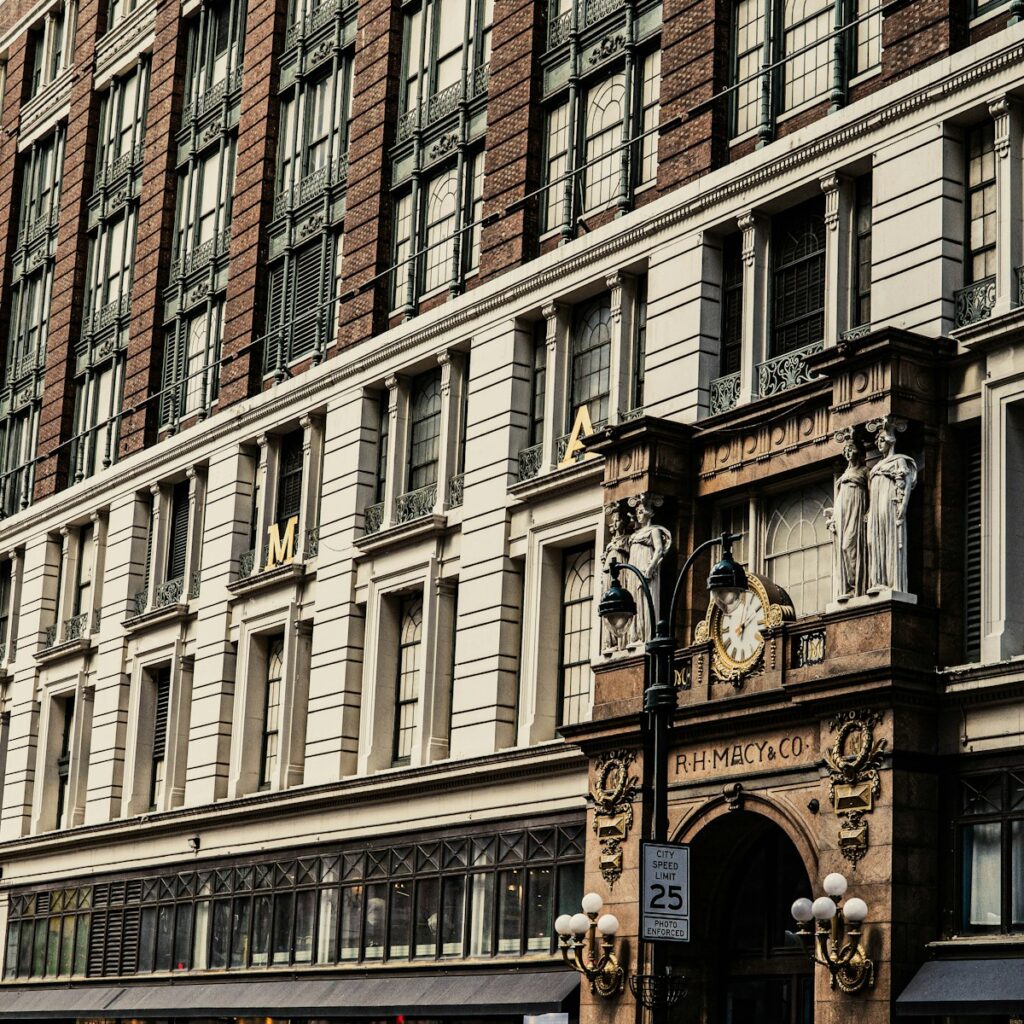
11. **Introduction of New Small-Format Macy’s Locations**In a significant departure from its traditional large-format department store model, Macy’s is actively introducing new small-format locations, designed to be more agile and responsive to contemporary shopping habits. These new stores are strategically positioned off-mall, typically in lifestyle centers and strip malls, placing them closer to where people live and shop daily for greater convenience and accessibility.
These smaller Macy’s stores are roughly one-fifth the size of their traditional counterparts, allowing for lower operational costs and a more curated shopping experience. They focus on top-selling categories such as apparel, beauty, shoes, and home goods, offering a streamlined selection that is easier for customers to navigate and purchase from. This format caters to a shopper who values efficiency and a focused product assortment.
As part of this expansion, Macy’s has plans to open 30 new small-format locations. An excellent example of this strategic repositioning is the new Macy’s small-format store set to open at Midway Crossings Mall in Miami, Florida. This specific move demonstrates how the brand is embracing new retail configurations in key urban areas, even as it closes underperforming, larger mall-based locations.
This pivot toward smaller, more specialized formats is a clear indication that Macy’s is reinventing itself to align with evolving consumer preferences. These stores are not just about reducing square footage; they are about enhancing the shopping experience by making it more convenient, localized, and tailored to modern lifestyle needs, ultimately contributing to the brand’s future identity and profitability.
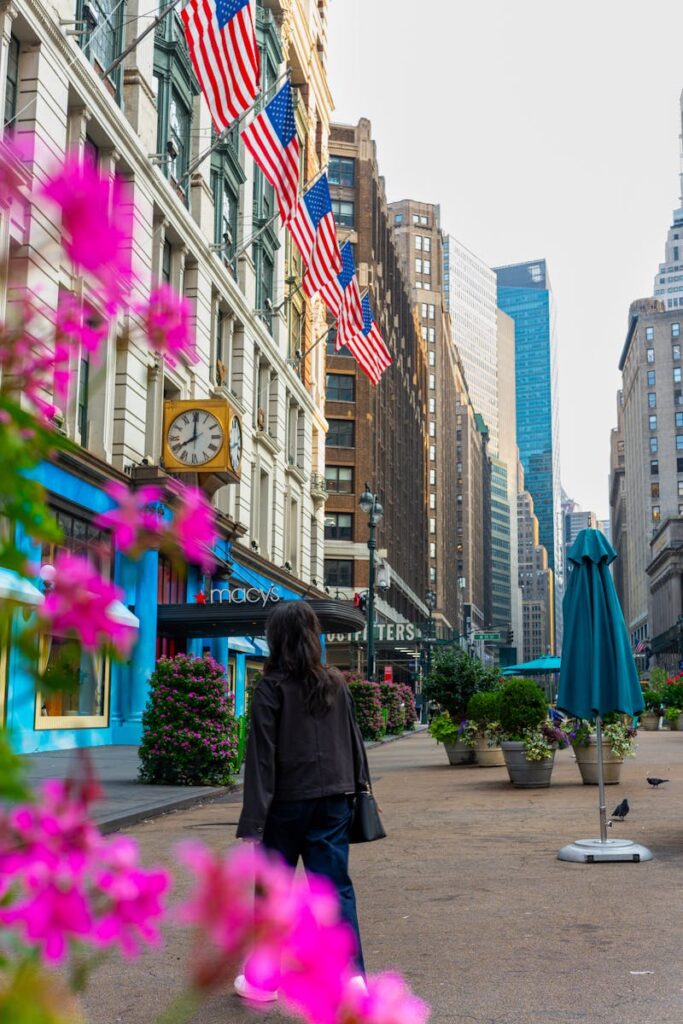
12. **Expansion of Luxury Brands: Bloomingdale’s and Bluemercury**A critical component of Macy’s ‘Bold New Chapter’ strategy involves a substantial investment in its luxury and beauty segments: Bloomingdale’s and Bluemercury. This strategic shift acknowledges the sustained growth in these specific markets, where consumers continue to show a strong willingness to invest in premium experiences, beauty products, and high-end fashion, even when tightening their belts in other categories.
Under this revitalized strategy, Macy’s parent company plans to open at least 15 new Bloomingdale’s stores. These new luxury department stores will be strategically located in affluent shopping areas, reinforcing Bloomingdale’s position as a premier destination for upscale fashion and curated lifestyle products. The expansion targets markets where demand for luxury retail remains robust and resilient.
Furthermore, Macy’s will open around 30 new Bluemercury beauty concept stores. This aggressive expansion reflects the high and consistent demand for skincare, cosmetics, and personalized beauty services. Bluemercury’s focus on high-touch customer service and a meticulously selected range of prestige beauty brands positions it as a key growth driver, capturing a significant share of the lucrative beauty market.
This significant lean into luxury and beauty segments highlights Macy’s understanding of market dynamics. By doubling down on these profitable divisions, the company aims to diversify its revenue streams and appeal to a broader demographic that values niche experiences and premium offerings. It’s a smart move to bolster the company’s overall financial health and ensure its continued relevance in a fragmented retail landscape.
Macy’s ‘Bold New Chapter’ is undeniably a period of intense transition, but it represents a clear strategic direction rather than a retreat. By making difficult choices about its physical footprint and aggressively investing in its strongest assets, both physical and digital, Macy’s is actively charting a course for future relevance. The shift towards smaller, more efficient formats and the expansion of its luxury brands, Bloomingdale’s and Bluemercury, underscore a commitment to adapting to an ever-changing consumer landscape. This isn’t the end of Macy’s; it’s a determined reinvention designed to secure its place in the next generation of American retail, balancing its rich legacy with the demands of a modern marketplace.



